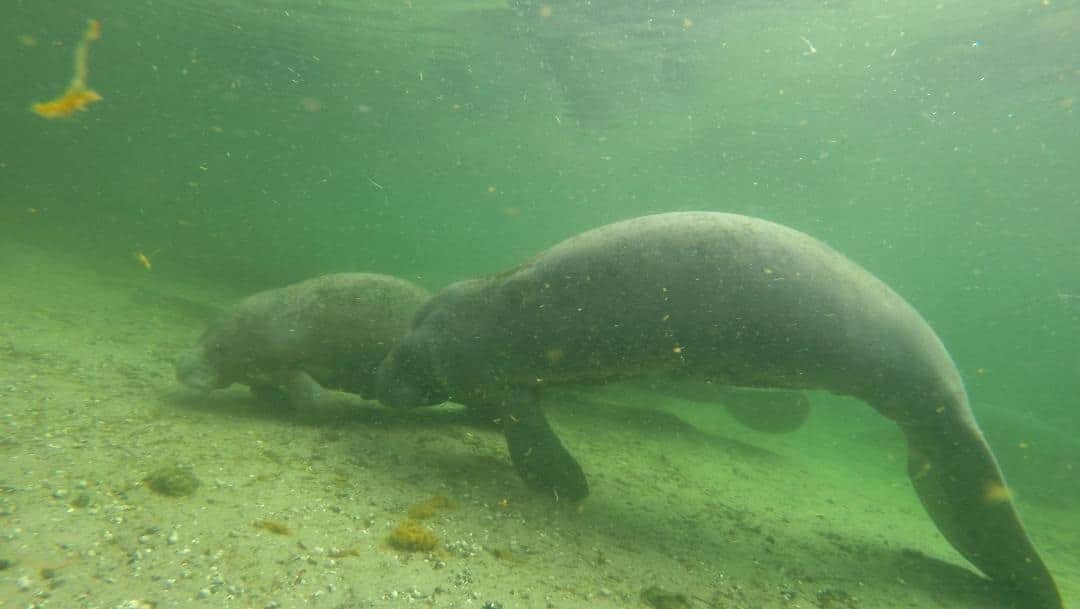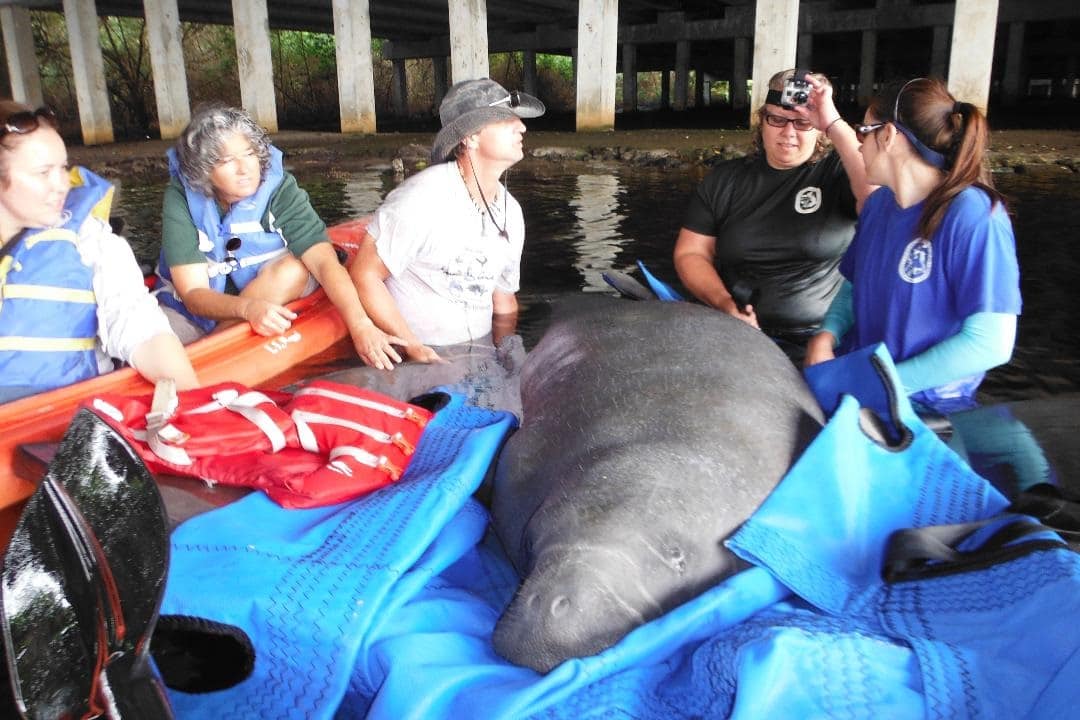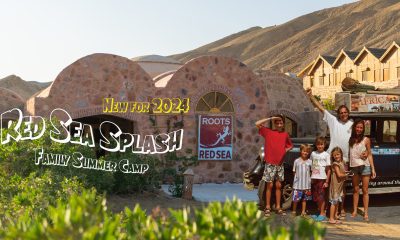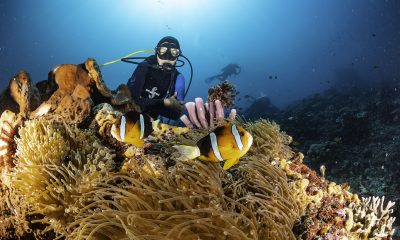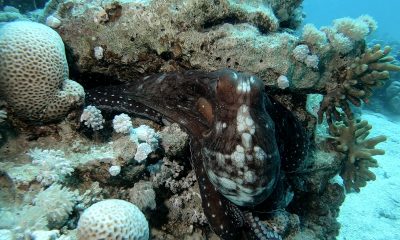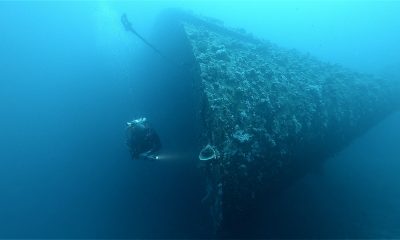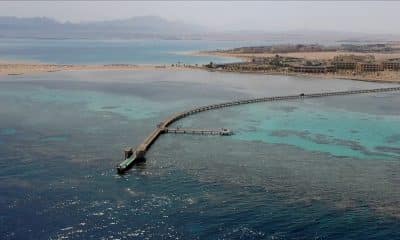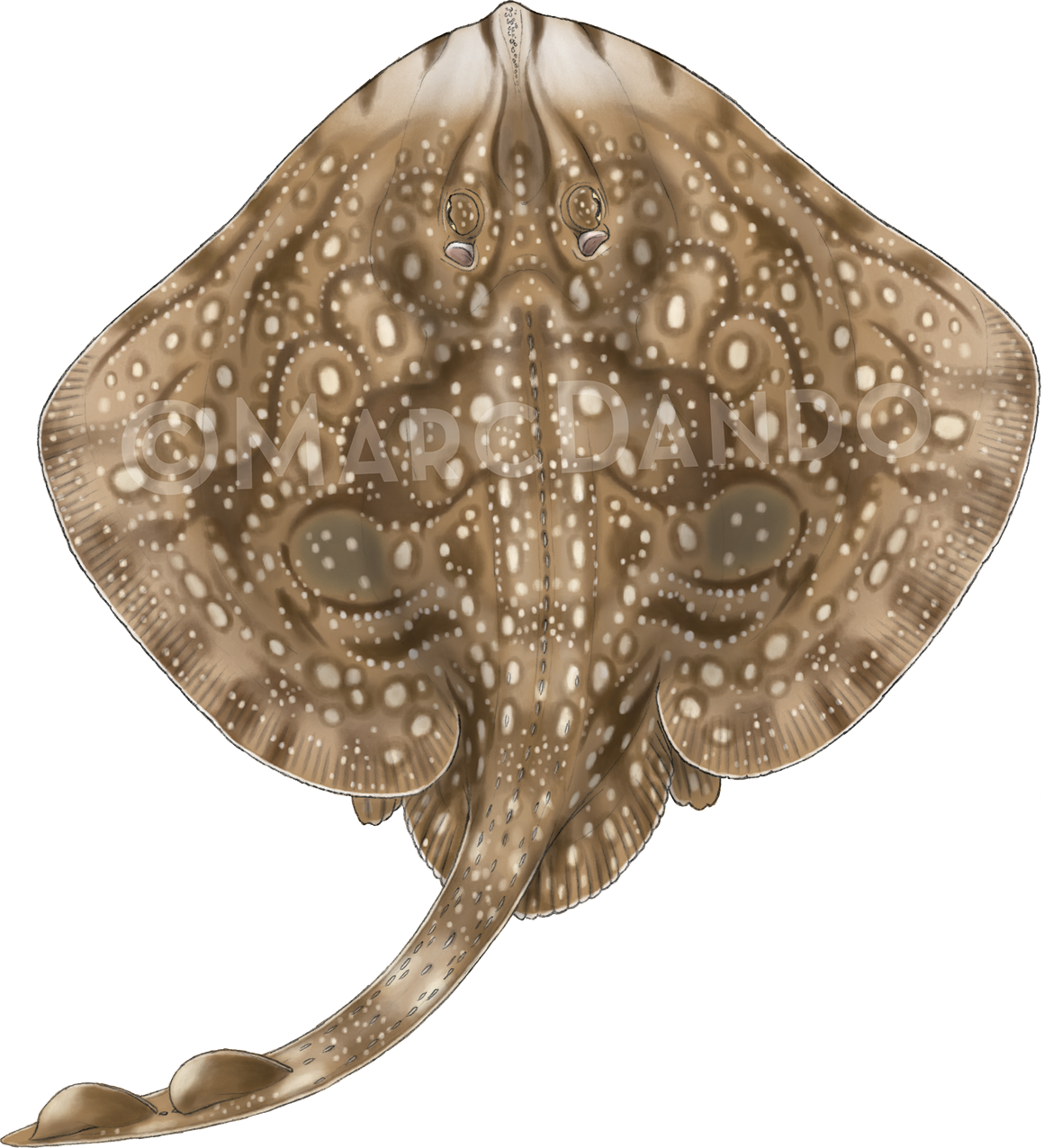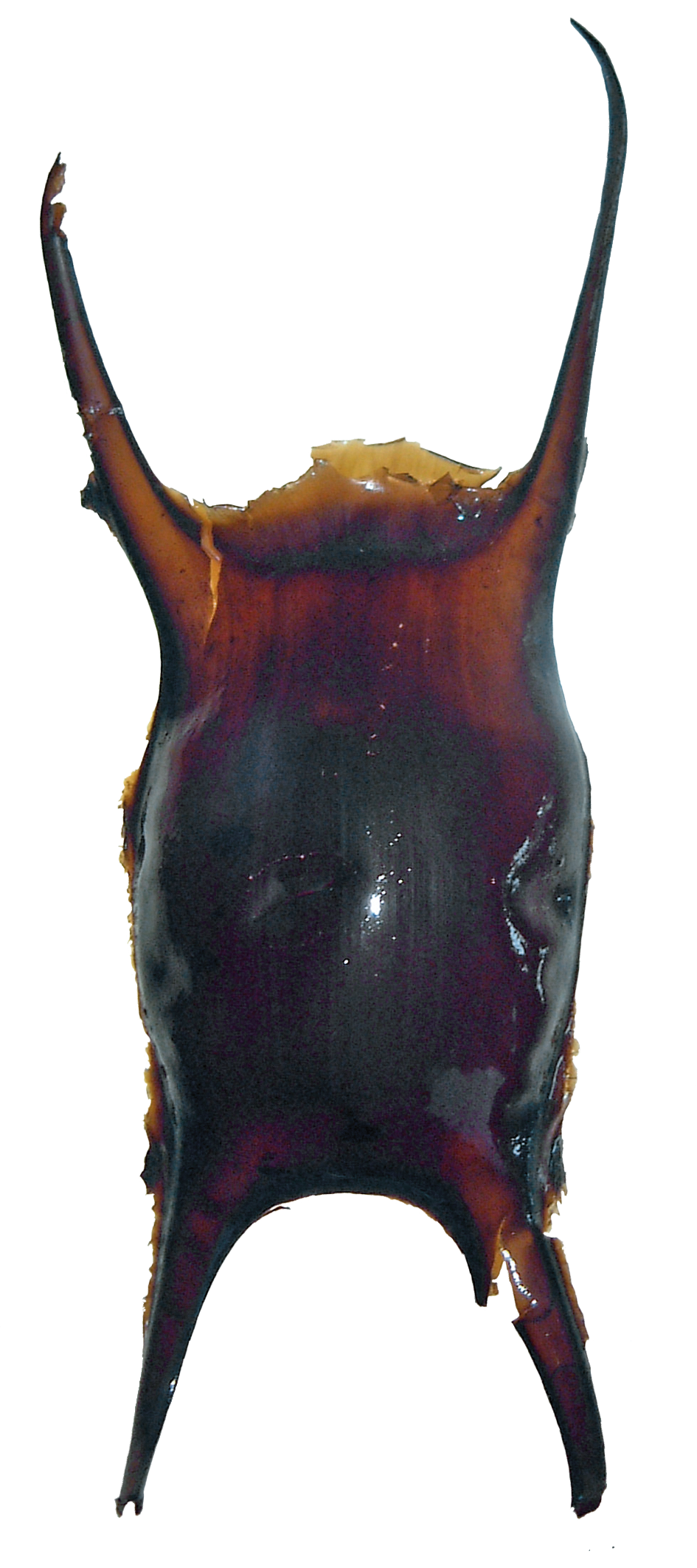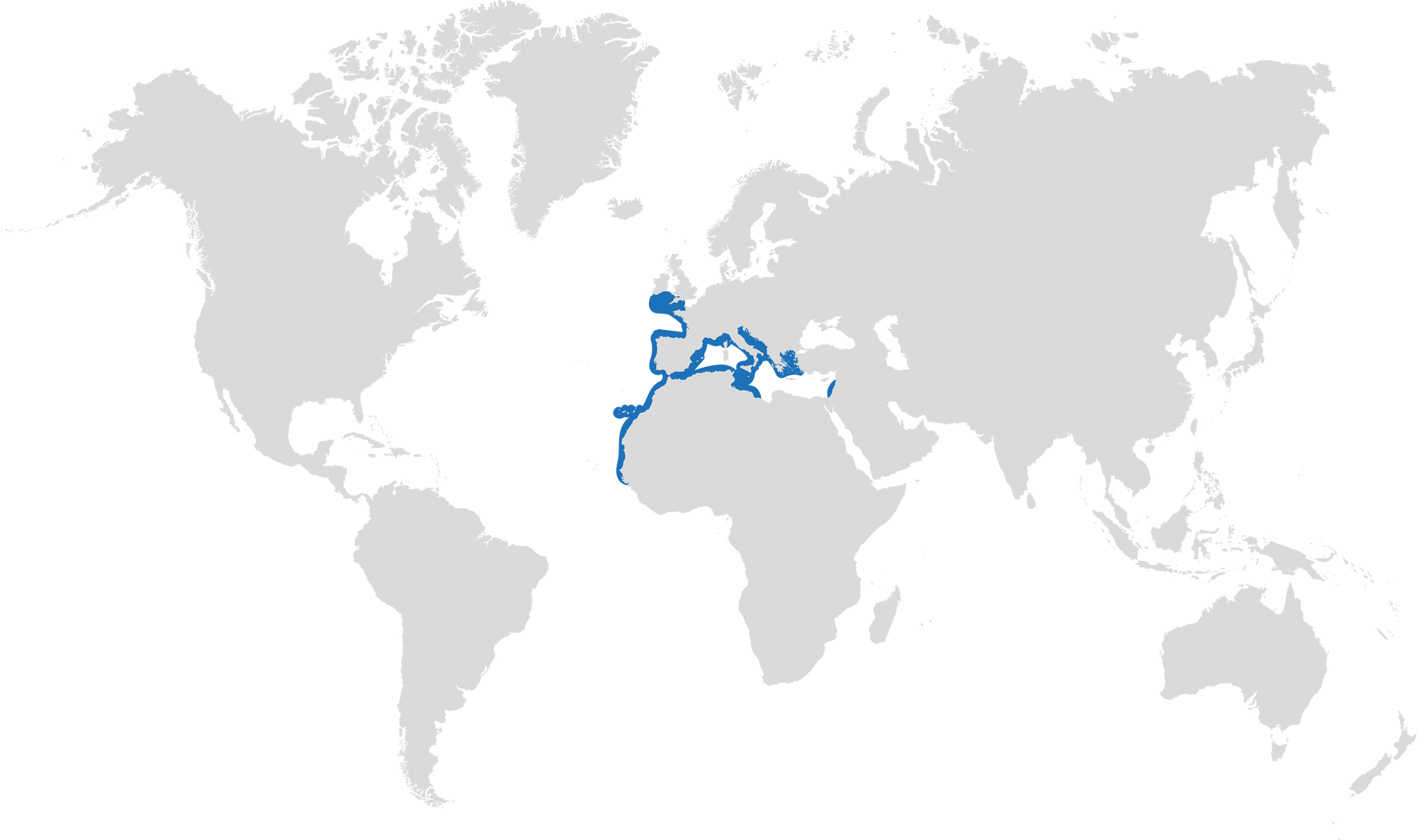Marine Life & Conservation Blogs
For the Florida Manatee it IS a state of emergency
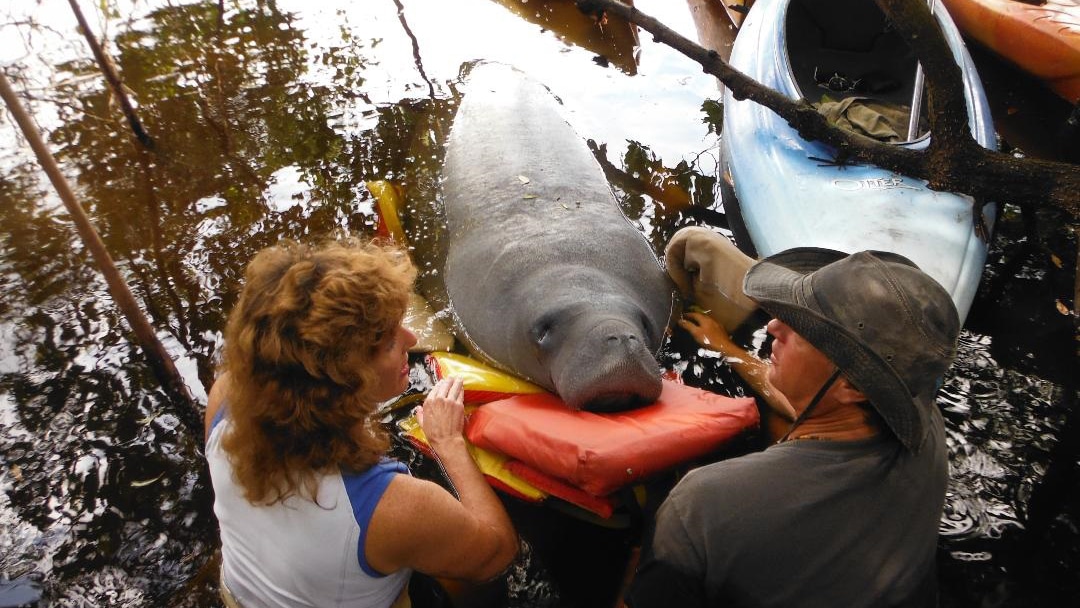
Guest Blog by Staci-lee Sherwood
As long as I can remember, manatees have been in trouble. For much of the 1970s and 80s, boat strikes were the most common cause of injury and death. Since 1974 the annual death rate has steadily increased every year. Unbelievably Florida and the US Fish and Wildlife agency (USFWS) decided in 2017 this warranted a delisting and removal of legal protection making our beloved manatees more vulnerable to population collapse. Patrick Rose, Executive Director of Save the Manatee Club, said: “Despite the fact a majority of their scientific peer reviewers felt that the move was premature from a biological standpoint.”
Despite disturbing trends that included significant habitat loss, USFWS went ahead with this misguided decision. In March 2021 a study was published showing that 55.8% of the Florida manatees sampled had Glyphosphate, a commonly used herbicide, in their tissue. A revision of critical habitat was warranted but the Service never revised the manatee’s critical habitat. In 2013, I wrote my first article about the manatee crisis and wondered how they would survive long term. In 2018 we were inching closer to extinction with massive pollution problems and seagrass die off and wondered again what it would take to save them. Now it’s 2021 with the worst die off in history. Things are so bad that the few manatees currently in rehab can’t be released because there is no food for them to eat. The calves born this year will all likely die. Replanting of seagrass earlier this year was a failure.
Due to the extreme crisis we are seeing a revision to the listing of the manatee to return to being listed as ‘endangered’ under the Endangered Species Act . This proposal would afford the manatee full legal protection. However a law is just words on paper and without any funding and enforcement can be rendered useless. Nevertheless, as long as a law remains on the books there is always potential use. But along with boat strikes newer more insidious dangers have come on the scene in two forms; Red Tide and Cyanobacteria.
Red Tide is thought to be naturally occurring but has become far more frequent and deadly. While the public calls it ‘red tide’ it’s actually called harmful algal blooms, or HABs, which occur when colonies of algae—simple plants that live in the sea and freshwater—grow out of control while producing toxic effects on people, fish, shellfish, marine mammals, and birds. Just what causes them to grow out of control is up for debate though all the dumping of human sewage, oil, pesticides and agriculture chemicals probably contributes. This is primarily the problem on the west coast but another danger awaits the manatees on the east coast and it’s called Cyanobacteria.
The east coast is often overwhelmed with Cyanobacteria, often called blue-green algae, which thrives on a recipe of nitrogen, phosphorus and warm water. These are the chemicals found in fertilizer used on lawns and agricultural which contribute to aquatic “dead zones” in coastal areas from runoff. Since Florida is warm year round, the amount of fertilizer that ends up in the water is more then would be found in colder climates. This means the water is constantly being saturated with toxins. Added to that is the huge phosphate mining industry which encompasses over 1 million acres that also leaks into our waterways.
No one really knows the extent of runoff from mining, lawns and farms but it’s enough to cause almost yearly massive marine life die off which includes fish, sea turtles, sharks, dolphins and manatees. For humans that breathe in the air that surrounds a bloom, touch the water or consume fish from the water, the consequences can be just as deadly. For manatees it has been the nightmare that keeps on giving,
Cyanobacteria is deadly by itself. Exposure for the manatee comes from breathing in the air near a bloom, swimming in toxic water and eating vegetation growing in it. You’ll know it when you see and smell it. The water takes on a vile smell and a caustic shade of neon green. As if this toxic soup wasn’t enough the state also sprays herbicides on aquatic vegetation. Among the plants deemed enemy of the state is Hydrilla, though Seagrass is the main food source manatees will eat this plant. Despite FWC and the companies they hire knowing this, they spray the poison on these plants anyway. This not only kills the plants but is deadly for the manatees who eat them. Now the stage is set for the unprecedented crisis of 2021.
A new study published in early 2021 sheds more light on the possible causes for the sick and dying manatees. While 90% of their food source has been killed by spraying, the type of chemicals sprayed is also of grave and confusing concern. In an ironic twist the most popular herbicide used by FWC is Diquat dibromide. The study shows how Bromide molecules detected in Cyanobacteria found on Hydrilla were made more toxic when sprayed with Diquat which contains Bromide. This causes the Cyanobacteria blooms to be more dangerous to all living creatures. Attempts to get an answer from FWC as to why they spray a toxin known to cause the explosion of Cyanobateria have gone unanswered. The EU banned Diquat and all products containing it in 2018.
All this spraying and dumping has finally bubbled up to where the die-off is officially classified as an unusual mortality event. But, said Rose: “It has been an unusual event among unusual events. We are talking about three times the mortality that occurs even in years that are affected by red tide and cold stress, in addition to watercraft injuries.”
Now a new cause of death among manatees has emerged: starvation. “Until recently, the availability of food had never been an issue for manatees,” Rose said. “But along stretches of the east coast, including the Indian River Lagoon, we have lost 90 percent of the seagrass.” A whopping 905+ manatees have died between January and August. Emergency funding for manatees was introduced back in April, HR 2848 Marine Mammal Research and Response Act of 2021, which would provide funding for more rehab centers and medical supplies among other things needed to keep the manatee alive. As of August 28th the bill has stalled in committee and might not even come for a vote till the end of the year.
In ancient times manatees were often mistaken for mermaids by sailors. Unfortunately for manatees the magical myth of mermaids will not be able to stave off extinction as long as Florida continues down the road of dumping pollutants into the waterways and their addiction to spraying poison continues unfettered.
Ways to help our dying manatees now:
- Contact FWC and request they stop spraying ALL toxic herbicides immediately Matt Phillips email – phillips@myfwc.com. Phone, 850-617-9430 & Michelle Pasawicz admin for manatee program michelle.pasawicz@myfwc.com
- As a US resident call your House of representative and ask they bring HR 2848 to the floor for a vote asap
- If not a US resident you can contact the Speaker of the House Nancy Pelosi and ask she bring If the bill HR 2848 to the floor for a vote phone: (202) 225-4965 or on Twitter Nancy Pelosi @SpeakerPelosi
- Stop using chemicals on your lawns.
- All sick and injured Manatees should immediately be reported to FWC at 1-888-404-3922
- If you are part of a HoA , educate them about not using herbicides
- All of these tips and more can be found on our website at https://www.savethemanatee.org/how-to-help/take-action/floridas-algae-blooms/
Photos: Thank you to Tim Martell (rescue photos) and Save the Manatee Club (photo of two Manatees underwater).
Marine Life & Conservation Blogs
Creature Feature: Undulate Ray
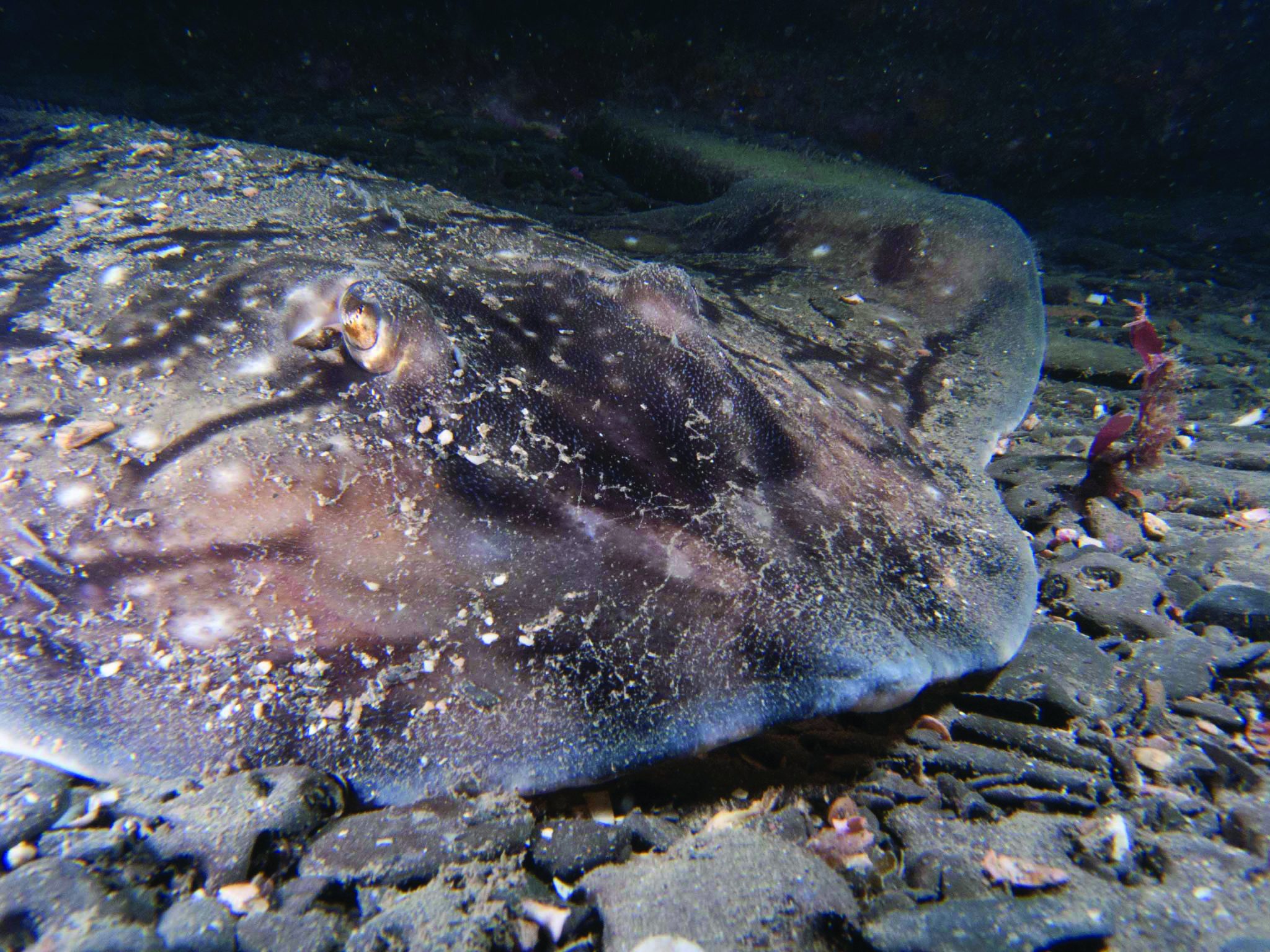
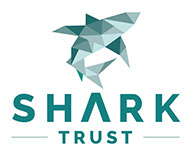 In this series, the Shark Trust will be sharing amazing facts about different species of sharks and what you can do to help protect them.
In this series, the Shark Trust will be sharing amazing facts about different species of sharks and what you can do to help protect them.
This month we’re looking at the Undulate Ray. Easily identified by its beautiful, ornate pattern, the Undulate Ray gets its name from the undulating patterns of lines and spots on its dorsal side.
This skate is usually found on sandy or muddy sea floors, down to about 200 m deep, although it is more commonly found shallower. They can grow up to 90 cm total length. Depending on the size of the individual, their diet can range from shrimps to crabs.
Although sometimes called the Undulate Ray, this is actually a species of skate, meaning that, as all true skates do, they lay eggs. The eggs are contained in keratin eggcases – the same material that our hair and nails are made up of! These eggcases are also commonly called mermaid’s purses and can be found washed up on beaches all around the UK. If you find one, be sure to take a picture and upload your find to the Great Eggcase Hunt – the Shark Trust’s flagship citizen science project.
It is worth noting that on the south coasts, these eggcases can be confused with those of the Spotted Ray, especially as they look very similar and the ranges overlap, so we sometimes informally refer to them as ‘Spundulates’.
Scientific Name: Raja undulata
Family: Rajidae
Maximum Size: 90cm (total length)
Diet: shrimps and crabs
Distribution: found around the eastern Atlantic and in the Mediterranean Sea.
Habitat: shelf waters down to 200m deep.
Conservation Status : As a commercially exploited species, the Undulate Ray is a recovering species in some areas. The good thing is that they have some of the most comprehensive management measures of almost any elasmobranch species, with both minimum and maximum landing sizes as well as a closed season. Additionally, targeting is entirely prohibited in some areas. They are also often caught as bycatch in various fisheries – in some areas they can be landed whilst in others they must be discarded.
IUCN Red List Status: Endangered
For more great shark information and conservation visit the Shark Trust Website
Image Credits: Banner – Sheila Openshaw; Illustration – Marc Dando
Blogs
Guarding Against Coral Invaders
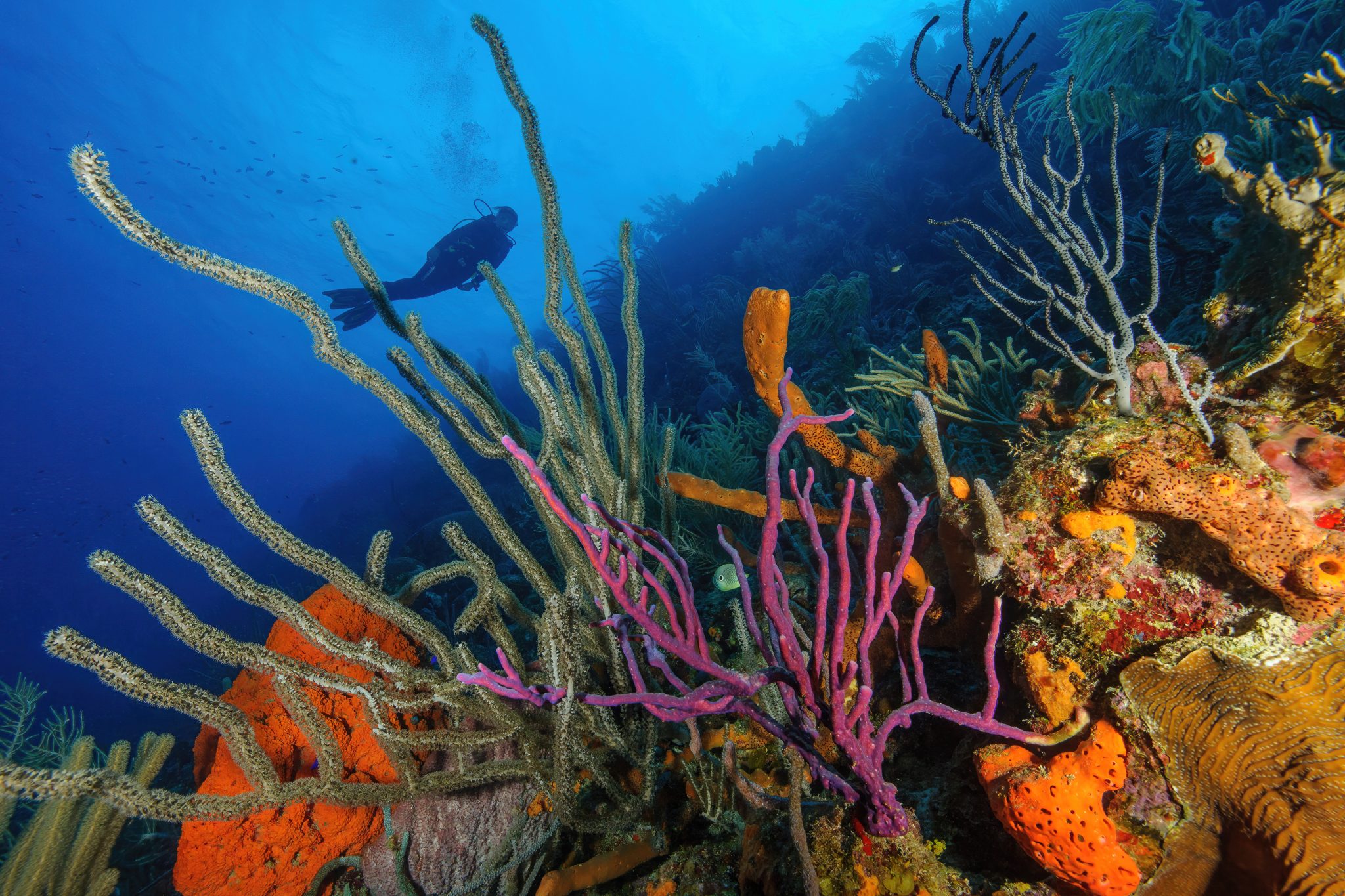
Protecting (Dutch) Caribbean Reefs from Unomia stolonifera
Recent reports highlight the concerning spread of the invasive soft coral, Unomia stolonifera, currently devastating Venezuela’s marine ecosystems and detected in Cuba. With the potential threat of its expansion to the (Dutch) Caribbean islands, urgent action and awareness are essential to safeguard marine biodiversity and local economies from possible catastrophic consequences.
Invasive species are animals or plants from another region of the world that don’t belong in their new environment. These species can have major ecological effects by decimating native flora or fauna. They can also cause large economic losses and impact human health. Invasive species also pose a significant threat to marine ecosystems worldwide, including the Dutch Caribbean. Among these invaders is the octocoral species Unomia stolonifera or “Pulsing Xenia”, originally from the Indo-Pacific. With its rapid growth and lack of natural predators, this species can outcompete native species and disrupt fragile marine habitats such as seagrass beds and coral reefs.
Background
The invasive soft coral U. stolonifera was first identified in 2014, off the coast of Venezuela. It is believed to have been introduced via the illegal aquarium trade. Since this species can reproduce sexually and asexually (or fragment), even small pieces can regenerate to spread. Once introduced it quickly took over shallow reefs and hard substrate at depths of 0-50 meters, outcompeting local corals and seagrass for space. Follow on surveys found that this coral species exhibited average percentage cover as high as 80%, vastly outcompeting native corals. In highly colonized areas, fish are disappearing due to loss of habitats.
In 2022, during a survey conducted in Cuba by the University of Havana, an unknown octocoral was discovered which was later identified as the invasive Unomia stolonifera. It is suspected that the coral larvae arrived in ballast water from fossil fuel ships originating from Venezuela, as nearby sites adjacent to Venezuelan ports have been heavily affected by the invasion.
How to help
Prevention through continuous monitoring, particularly in high-risk areas such as marine harbors and oil facilities, is paramount. Early detection plays a pivotal role in mitigating the threat posed by Unomia stolonifera.
The public’s involvement and awareness are also vital. Local communities, recreational divers, tourists, and all stakeholders are urged to participate in early detection efforts by reporting sightings (photo, location and date) of this invasive coral to their respective Protected Area Management Organization (PMO’s)- the Fundacion Parke Nacional Aruba (FPNA), STINAPA Bonaire, CARMABI Curaçao , Saba Conservation Foundation (SCF), Nature Foundation St. Maarten (NFSXM) and St. Eustatius National Parks (STENAPA). If an invaded area is confirmed, follow the recommendations by the local PMO’s.
Keys to Success
Despite the challenges, early detection is key to mitigating the threat posed by Unomia stolonifera. With continued vigilance, research, and community engagement, there is hope for containing this potential issue before it becomes a major threat.
About the DCNA
The Dutch Caribbean Nature Alliance (DCNA) supports (science) communication and outreach in the Dutch Caribbean region by making nature related (scientific) information more widely available through amongst others the Dutch Caribbean Biodiversity Database, DCNA’s news platform BioNews and through the press. This article contains the results from several scientific studies but the studies themselves are not DCNA studies. No rights can be derived from the content. DCNA is not liable for the content and the in(direct) impacts resulting from publishing this article.
-
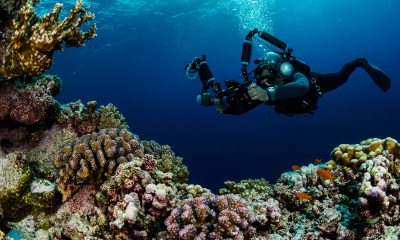
 News3 months ago
News3 months agoHone your underwater photography skills with Alphamarine Photography at Red Sea Diving Safari in March
-
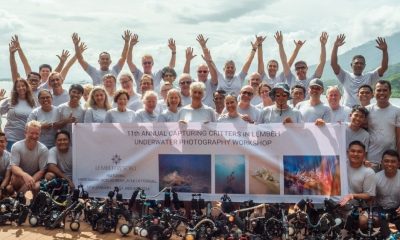
 News2 months ago
News2 months agoCapturing Critters in Lembeh Underwater Photography Workshop 2024: Event Roundup
-
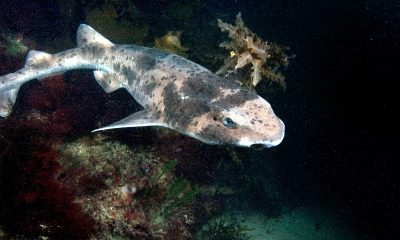
 Marine Life & Conservation Blogs2 months ago
Marine Life & Conservation Blogs2 months agoCreature Feature: Swell Sharks
-
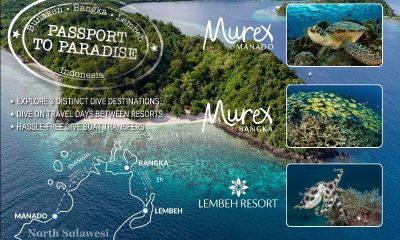
 Blogs2 months ago
Blogs2 months agoMurex Resorts: Passport to Paradise!
-
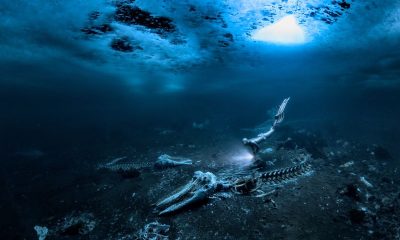
 Blogs2 months ago
Blogs2 months agoDiver Discovering Whale Skeletons Beneath Ice Judged World’s Best Underwater Photograph
-
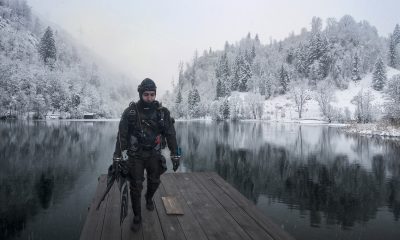
 Gear News3 months ago
Gear News3 months agoBare X-Mission Drysuit: Ideal for Both Technical and Recreational Divers
-

 Gear Reviews2 months ago
Gear Reviews2 months agoGear Review: Oceanic+ Dive Housing for iPhone
-
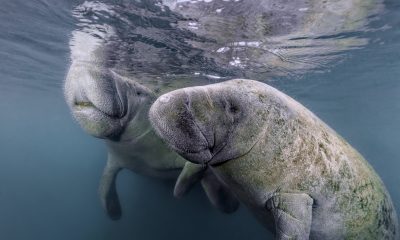
 Marine Life & Conservation2 months ago
Marine Life & Conservation2 months agoSave the Manatee Club launches brand new webcams at Silver Springs State Park, Florida


